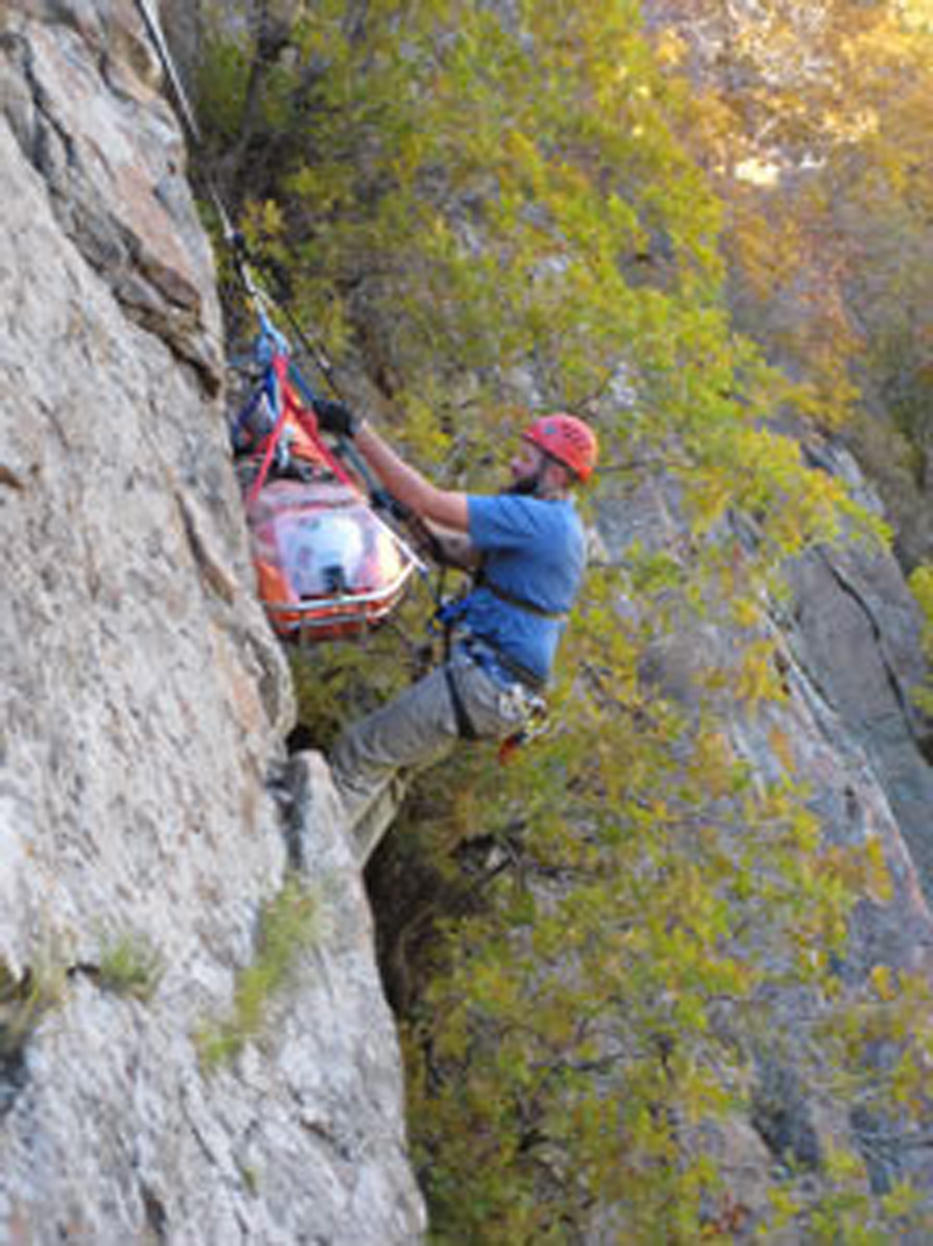
SALT LAKE CITY—When someone’s seriously injured skiing, climbing, mountain biking, or hiking in the wilderness, emergency responders need specific skills and knowledge to properly treat the patient—and there’s no better place to teach that expertise than in the high-alpine wilderness of Utah and Colorado.
With this in mind, the University of Utah is partnering with the University of Colorado, International Society of Mountain Medicine (ISMM), International Commission for Alpine Rescue (ICAR), and Union Internationale des Associations d’Alpinisme (UIAA) to offer a diploma in mountain medicine for emergency responders.
The program, which begins in early February, is designed for doctors, flight nurses, physician assistants, nurse practitioners, paramedics, and other trained responders who would be the first providers to reach someone seriously injured in the mountain environment. Participants will include members of search and rescue organizations, expedition doctors, ski patrol, and those who want experience and expertise in this type of medicine. The program’s co-directors, two seasoned climbers who understand the unique needs of wilderness medicine, are George Rodway, Ph.D., CRNP, assistant professor of nursing at the U of U College of Nursing, and U of U emergency physician and assistant professor of emergency medicine Scott E. McIntosh, M.D., M.P.H.
Rodway’s backcountry experience includes more than 30 years of mountain climbing as well as service on a search and rescue team in Alaska. McIntosh, in May 2011, reached the summit of Mt. Everest with world-famous climber Apa Sherpa on his record 21st time climb to the top of the highest peak on Earth. Whether it’s in extreme places such as Alaska and Everest or in Utah’s Wasatch Range, treating injuries in mountain wilderness requires different knowledge and skills than in other situations, according to Rodway.
“One small miscalculation can lead to big consequences,” he says.
High alpine areas can be an unforgiving environment, with altitude and temperature extremes being ever-present considerations. Thus, providing care in remote mountain areas—well-removed from civilization and its ready access to definitive medical treatment—can be quite a challenge. In addition, managing patient care becomes even more difficult in remote mountain terrain that involves technical mountaineering during medical rescue situations.
Mountain medicine requires a unique set of skills not typically taught in medical, nursing or paramedic schools. Proper treatment requires an assessment of risk, technical climbing and rescue skills, and medical knowledge targeted toward the maladies one will encounter in the mountain environment, according to Rodway and McIntosh. These include high altitude problems such as acute mountain sickness, high altitude pulmonary edema, and high altitude cerebral edema. Frostbite, hypothermia, and trauma from mountaineering falls are common problems as well. Many times, medical personnel have the least amount of climbing or technical training on a rescue team. This course will bring the medical providers knowledge up to the level of a competent rescuer so that they can become an active member of the team.
To help responders gain the knowledge and skills they need for treating people injured in the wilderness, the new program entails four weeks of training—two in a classroom and two in the field. Classes take place in one-week blocks in February, June, July, and September. The winter session will be held in Park City, Utah, in conjunction with the annual Wilderness Medicine Society meeting. Colorado will host the summer course. Because the training requires one-week commitments at a time, participants can spread it over two years.
The field sessions will offer training in climbing and other skills responders may need to negotiate backcountry conditions. These sessions will be limited to 12 people to ensure each responder receives adequate training. McIntosh says he expects emergency responders from Utah, the Mountain West, and from across the country to take the course.
“There’s a big interest in mountain medicine, especially here in Utah,” he says.
For dates and registration information, go to http://wms.org/education/dimm.asp
